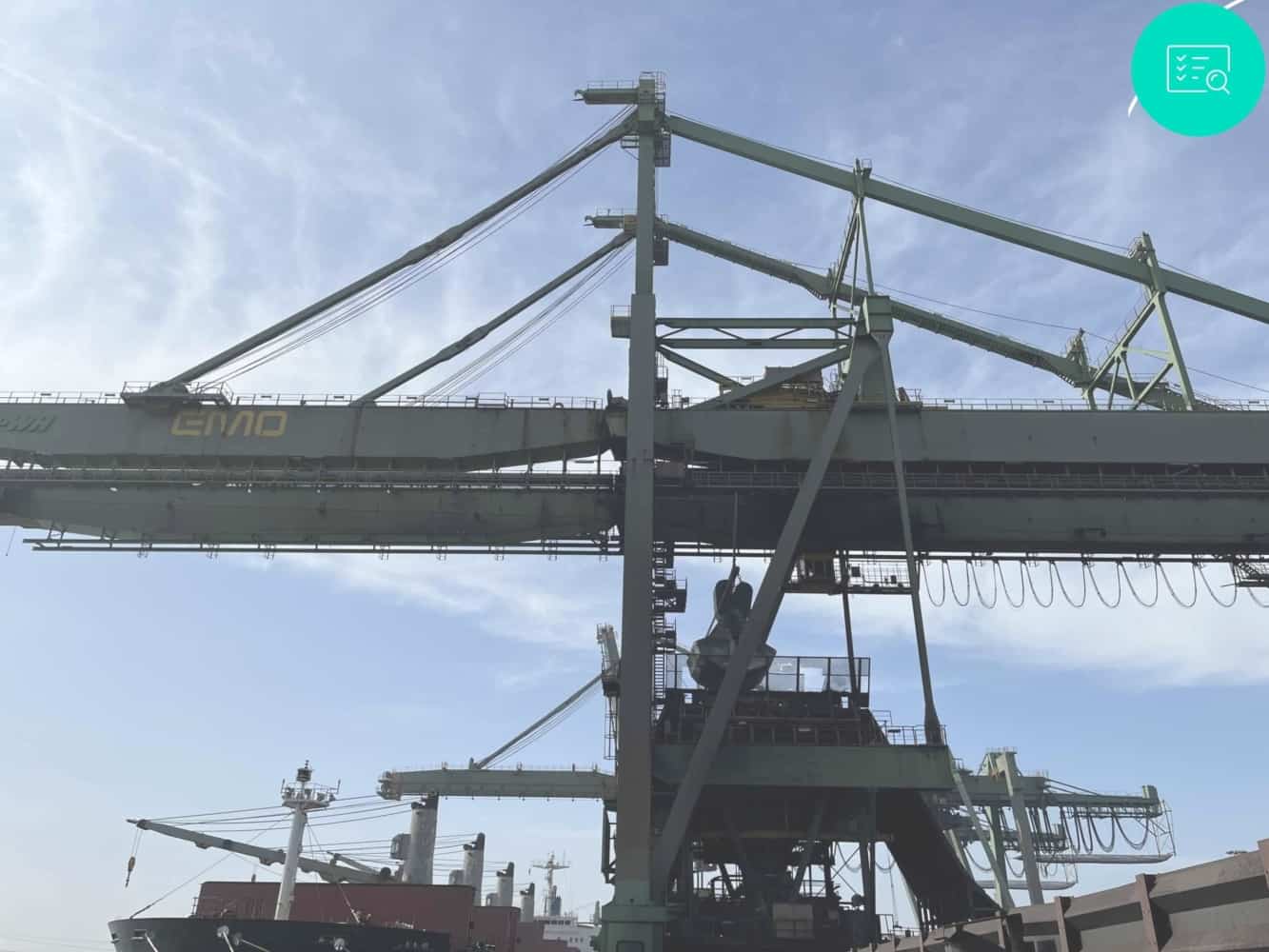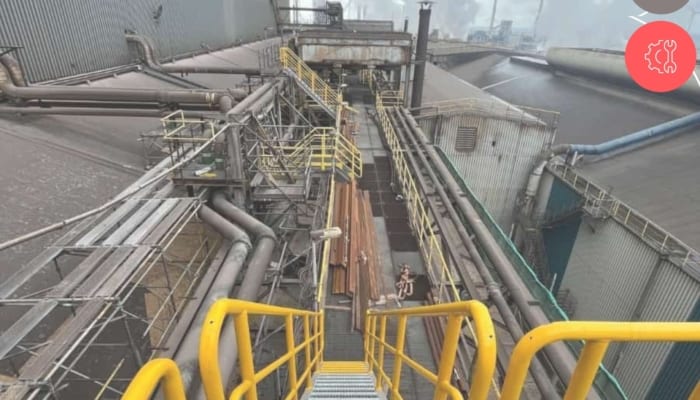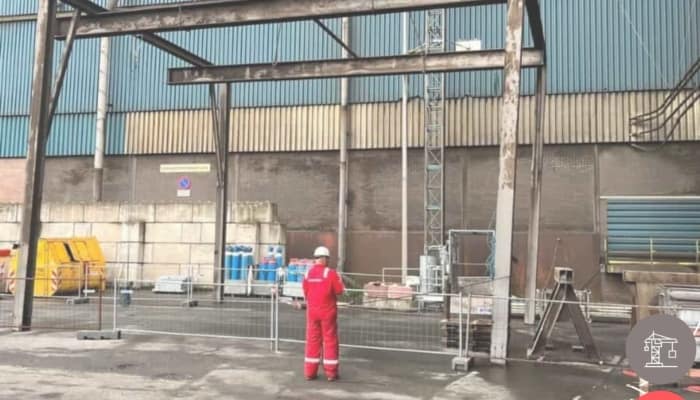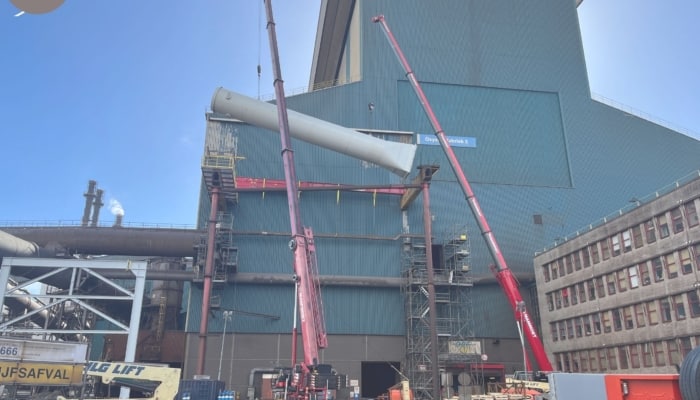Since 2018 we have been working for EMO, the largest dry bulk storage and transshipment terminal in Europe. The dry bulk cargo on the EMO site ultimately finds its route by rail, water and road to the European hinterland for customers in the steel industry, silicon industry and the energy sector. For the transshipment of dry bulk cargo, EMO has various capital-intensive installations such as unloading bridges, excavating/dumping machines, train and barge loaders, all linked by a conveyor belt system.
In the past years we have been able to carry out various integrity and lifespan inspections of the conveyor belt system, excavating/dumping machines and loaders for EMO. Recently, EMO had Intures inspect an unloading bridge to determine its remaining lifespan and to provide maintenance advice.
The ‘old’ approach
We normally digitize an unloading bridge (or crane) or similar installation prior to an inspection using static, dynamic 3D scanners and drones. We model a 3D visualization from the point clouds, from which inspection sheets follow. The purpose of a 3D model is to increase the traceability of the inspection results. Modeling from a 3D scan produces a very accurate model, but a less detailed model is also sufficient for simply visualizing inspection results. Making a model out of a point cloud can be labor-intensive and is therefore not desirable in some cases. However, the inspection sheets that follow from the model are highly visual and allow us to display our findings at the exact location with high traceability. The inspection sheets combined with the advisory report were delivered as the end product.
The unloading bridge, which we are now digitalizing and inspecting for EMO, is used to unload the largest seagoing vessels from dry bulk cargo and is stationary for a limited time. An unloading bridge is an installation of enormous size in length and height (70+ meters), with many locations that are difficult to reach, for example above water. This installation required a different approach.
The new approach
The new approach concerns an innovation, the idea of which had already been on the shelf at Intures for some time. The development of this innovation was actually planned for Q1 of 2023. The collaboration with EMO is sustainable and focused on the future. Since the new working method seemed to have potential and matched the demand and needs of EMO, we decided to start this earlier and put it into practice at EMO. This is in full belief that EMO can achieve significant benefits in the short and long term by determining the right short- and long-term maintenance strategy.
So, what have we done differently?
The unloading bridge was visually captured within a day by using a drone. The drone has taken thousands of images that are linked together to create one 3D model, a so-called 3D (mesh) model. During the fly-in, difficult-to-reach locations, such as the impact of the unloading bridge, which hangs above the water, were inspected extra carefully with an HD camera and our specialists assessed the images together with the client.
We then expanded our Mainvisio inspection software with the option to upload and display 3D (mesh) models in our inspection software. The 3D (mesh) models could be loaded into our inspection software almost immediately after flying in. Thanks to this new working method, our inspectors are able to directly annotate findings in the field at the exact locations in the 3D model, without having to do 3D modeling. Where the power and traceability of 3D is retained, without concessions in terms of quality!
This makes it even easier for the customer to understand and find where and what findings were observed. 3D modeling for inspection is therefore not a must, but an option that can be consciously chosen. The inspection data hardly requires post-processing in the office, this is done directly in the field in an intuitive manner.
The result?
- A reduction in inspection costs of at least 20%!
- A significant lead time reduction in work preparation (factor 3) because 3D modeling to obtain a 3D model for inspection is not necessary in all cases.
- Annotating inspection data in a 3D model.
- Digital inspection reports directly from the field.
- Direct insight into the maintenance status and urgent maintenance.
- A link between 3D models and inspection data in a powerful database with filtering options for risks, maintenance costs and installation parts.
- Detailed sheets with maintenance data applicable for tactical and strategic maintenance policy, budgeting maintenance costs or outsourcing maintenance activities to companies.
- Less downtime due to inspection.
Naturally, there are still plenty of challenges, but we are very pleased with the results achieved. This project was completed satisfactorily and provides a lot of energy for further development.
In Q1, when Mainvisio’s customer portal is completed, our customers will also be able to watch interactively and gain access to their own maintenance data with many more functionalities that our platform has to offer. It also enables our clients to carry out targeted and effective maintenance. More about that later!










